Los Médanos de Coro National Park!!
Los Médanos de Coro National Park
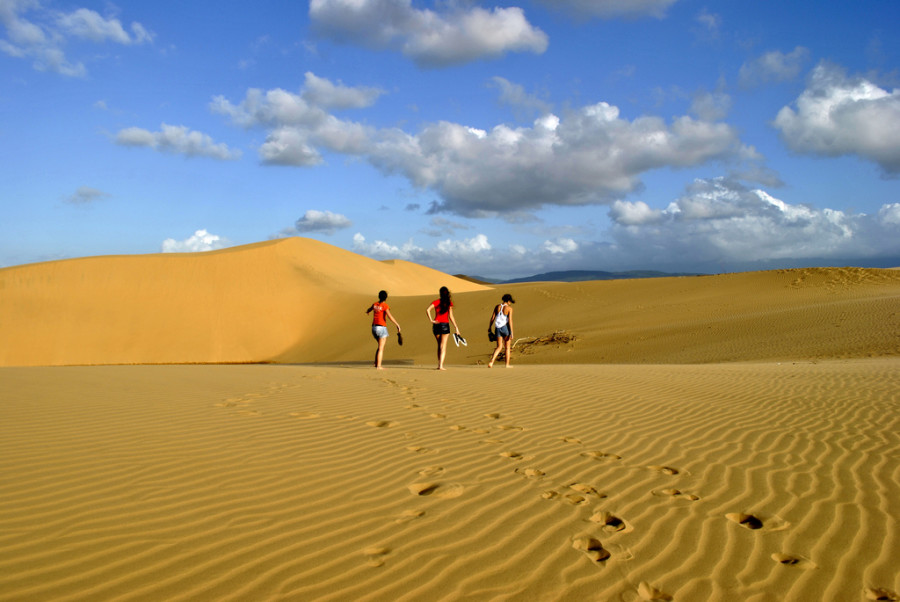
Located in the state of Falcón, in the jurisdiction of the municipalities Miranda, Colina and Falcón, in the northwest of Venezuela. Its most important area is circumscribed around the isthmus, on the road to the Paraguaná Peninsula on the north side of the city of Santa Ana de Coro. The isthmus comprises a strip 30 km long and 5 km wide. It has an average height of 20 meters above sea level. Its sandy accumulations move in a changing way due to the action of the trade winds that blow from east to west. Los Médanos de Coro was declared a national park on February 6, 1974 under decree No. 1,592, covering an area of 91,280 hectares, of which 42,160 are continental lands and 49,120 are marine areas.
The choir dunes are sand formations characteristic of the Falcón state relief, this part of the Lara-Falcón system being its dunes that exceed the 8 meters of the ground. This national park preserves the largest desert on the Caribbean coast and is the closest protected area to the Gulf of Venezuela
This park gets bigger every day because the strong breezes of the Paraguaná Peninsula cause erosion, that is, each dune is in motion because the sand is dragged by the trade winds. This park preserves a very vulnerable coastal desert and at the same time a coast full of mangroves.
Training of the Médanos
The soft and dry sands of this National Park are the result of wind erosion on the rocks that are broken up into small pieces over time, turning them into grit and this, when moving by the continuous action of the wind, accumulates in piles, becoming little by little, dunes that continually change shape as they are in continuous movement. That is why the dunes have also received the name of nomadic arenas.
Similar Médanos formations elsewhere in Venezuela
Similar formations also exist in other parts of the country: on the road to Castilletes, on the island of Zapara (Zulia state), on Cape San Román, in the vicinity of Puerto Cumarebo (Falcón state), and on the Venezuelan plains, in the surroundings of the Cinaruco Capanaparo National Park (Apure State) and the Aguaro Guariquito National Park (Guárico State).
In the dunes of Tocópero and Puerto Cumarebo, outside the limits of the park you can see 'dunes fossils', hills of sandy substrate formed by the compaction of the dunes and covered by permanent vegetation. These are of different sizes and show different levels of vegetation development, so they probably represent different stages of formation, prior to the current Médanos de Coro. However, they are not so big nor are they preserving the concept of the dunes of choir.
Declaratory as a National Park
The choir dunes, were decreed as a national park due to its natural beauty and to maintain the concept of desert biome, besides being the only desert of the Caribbean coast to be always in motion and that each dune exceeds 8 msm. A seagrass with mangroves is also protected.
Landscape
The Park is constituted in its greater extension, by the isthmus that unites the rest of the State with the Peninsula of Paraguaná, in which dominant elements of the landscape appear: The Médanos (formation of dunes), the shrub communities of mangroves, the lands with herbaceous vegetation and spines.4 The landscape of this Venezuelan desert is composed of dunes 20 meters high above sea level, dunes and salty marshes.
Flora
As in any arid or desert zone, the vegetation is scarce, existing no more than 60 vegetal species, mainly the tunas, cardones, cactus and Pitihayas. There are shrubs of mangroves in mammals, muddy coasts and prickly pears of more than 2 meters. They are also present in the park, legumes such as the cují yaque and small trees such as the dividive, the yabo, the olive tree. There are also poisonous plants such as the pringamosa, the tooth e 'dragon and love spicy.
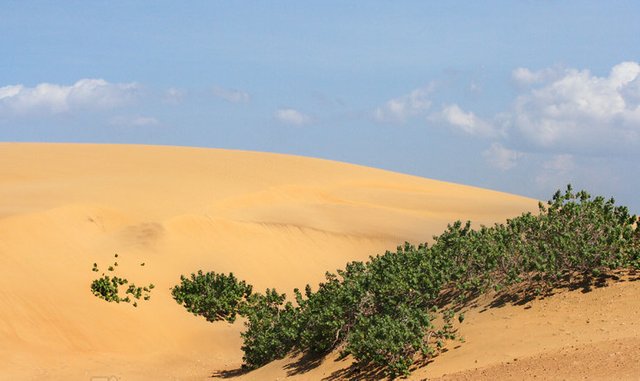
Fauna
In the same way, the wildlife is somewhat scarce, being able to observe reptiles, lizards, iguanas, bats and anteater, among others. There is little abundance of mammals: common fox (Cerdocyon thous), bear melero (Tamandua tetradactyla), rabbit savanna (Sylvilagus floridanus). Among the birds, the Cardinal Corianus (Cardinalis phoenicea), the primitive hawk, sparrowhawks, partridges, dara, pigeons, turpiales, pelicans (Pelecanus occidentalis), herons and sandpipers stand out. Of the reptiles are the Thorny Devil, the green iguana, the horned lizard, as well as the rattlesnake.
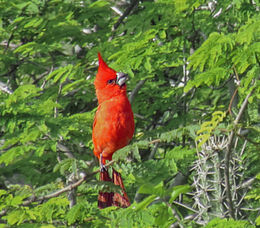
Weather
The climate of the park is one of the most arid in Venezuela, and the average temperature is uniform throughout the year, ranging between 26 ° C and 29 ° C, with extreme temperatures of 35 ° C in shade and minimums below of 16 ° C. Rainfall is scarce, from 250 to 498 m.m.
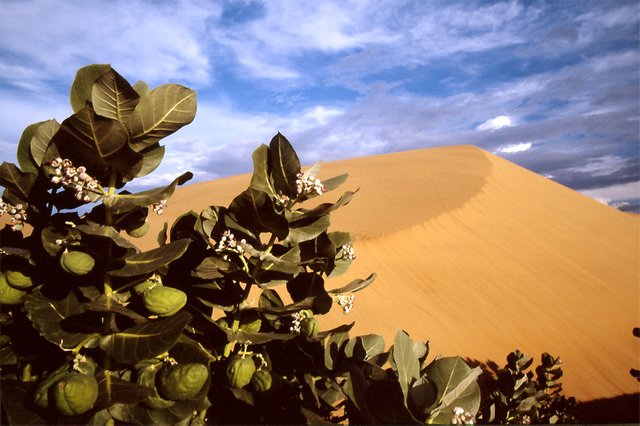
Endangered species
The blue tarantula and the pygmy bear are critically endangered species that are only found in Paraguana.
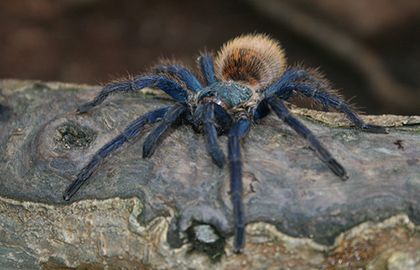
Consequences of the Médanos with the beach of the sail
The strong breezes of Paraguaná strongly push the sand causing sandstorms and less powerful tornadoes made of sand. This pushes the sand to the beach of the choir candle and this is why it is clay-yellow in color. The port is also covered by sand until its beginning.
Access
The access routes to Los Médanos are several, however the most common are: the entrance from the Paseo "Monseñor Iturriza", or the Coro-Punto Fijo highway.
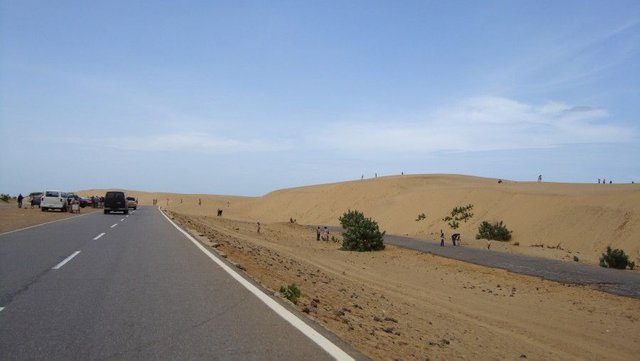

I was born in Punto Fijo, near to Coro. This is my state, nice post!
Bellas fotografías, hermosos paisajes! saludos desde Colombia... @originalworks
The @OriginalWorks bot has determined this post by @gersonarellano to be original material and upvoted it!
To call @OriginalWorks, simply reply to any post with @originalworks or !originalworks in your message!